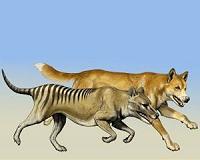| . |  |
. |
Canberra, Australia (SPX) May 06, 2011 In just 10 weeks a team of Canadian researchers has succeeded in 'barcoding' 28,000 moth and butterfly specimens - or about 65 per cent of Australia's 10,000 known species - held at CSIRO's Australian National Insect Collection (ANIC) in Canberra. Conducted in collaboration with the Atlas of Living Australia (ALA) as part of the International Barcode of Life (IBoL), the project involved extracting DNA from each specimen to record its unique genetic code and entering the results, together with an image and other details, to the ALA and ANIC databases. ANIC is the first national collection to integrate the new barcoding approach for a major group of insects. The Collection's Director, Dr John La Salle, said DNA barcoding is a kind of 'genetic fingerprinting' which has proven useful in identifying different forms of life. "Barcoding will be critically important to our goal of being able to rapidly identify most organisms on the planet within the next decade or so," Dr La Salle said. "This will produce strong benefits for entomology, life sciences and biosecurity." He said barcoding has already achieved some interesting successes in, for example, Europe and the US where it is being used to investigate food fraud, such as selling one type of fish as another type of fish. According to Atlas of Living Australia Director, Donald Hobern, many moths and butterflies are of economic and/or environmental importance to Australia. "Using barcoding for rapid species identification will transform how we handle monitoring of biodiversity across Australia and how we respond to potential pest arrivals at Australian borders," Mr Hobern said. "Barcoding for rapid species identification is a powerful new tool which will also assist taxonomists in recognising and describing new species."
Share This Article With Planet Earth
Related Links Australian National Insect Collection Darwin Today At TerraDaily.com
 Thylacine hunting behavior A Case of crying wolf
Thylacine hunting behavior A Case of crying wolfProvidence RI (SPX) May 05, 2011 Its head and body looked like a dog, yet its striped coat was cat-like. It carried its young in a pouch, like a kangaroo. No wonder the thylacine - the enigmatic, iconic creature of Australia and Tasmania - was the object of so much confusion, alternately called the "marsupial wolf" and the "Tasmanian tiger." So what was it? By studying bones of thylacines and 31 other mammals, researchers ... read more |
|
| The content herein, unless otherwise known to be public domain, are Copyright 1995-2010 - SpaceDaily. AFP and UPI Wire Stories are copyright Agence France-Presse and United Press International. ESA Portal Reports are copyright European Space Agency. All NASA sourced material is public domain. Additional copyrights may apply in whole or part to other bona fide parties. Advertising does not imply endorsement,agreement or approval of any opinions, statements or information provided by SpaceDaily on any Web page published or hosted by SpaceDaily. Privacy Statement |